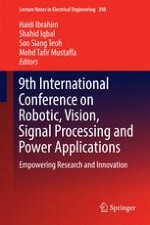The proceeding is a collection of research papers presented, at the 9th International Conference on Robotics, Vision, Signal Processing & Power Applications (ROVISP 2016), by researchers, scientists, engineers, academicians as well as industrial professionals from all around the globe to present their research results and development activities for oral or poster presentations. The topics of interest are as follows but are not limited to:
• Robotics, Control, Mechatronics and Automation
• Vision, Image, and Signal Processing
• Artificial Intelligence and Computer Applications
• Electronic Design and Applications
• Telecommunication Systems and Applications
• Power System and Industrial Applications
• Engineering Education
